The choice of bathtub can dramatically influence both the design and functionality of a bathroom. More than just a place to bathe, the bathtub often sets the tone of the space—whether it’s a statement of luxury or a practical solution for everyday living.
The two most common styles are freestanding bathtubs and built-in bathtubs. Freestanding tubs are admired for their luxury appeal and ability to act as a centerpiece in high-end bathrooms, while built-in tubs offer space efficiency and practicality, making them ideal for compact or large-scale residential projects.
In addition to style, the rise of smart and sustainable bathtub fittings has transformed modern bathrooms. From digital controls and thermostatic mixers to water-saving aerators and eco-materials, smart fittings enhance comfort, improve safety, and help projects meet green building goals.
For wholesalers, developers, and designers, understanding the right fittings—whether for freestanding, built-in, or smart bathtub systems—is critical. This guide explores the differences between bathtub types, highlights the fittings they require, and shows how smart solutions can elevate both guest experience and project value.
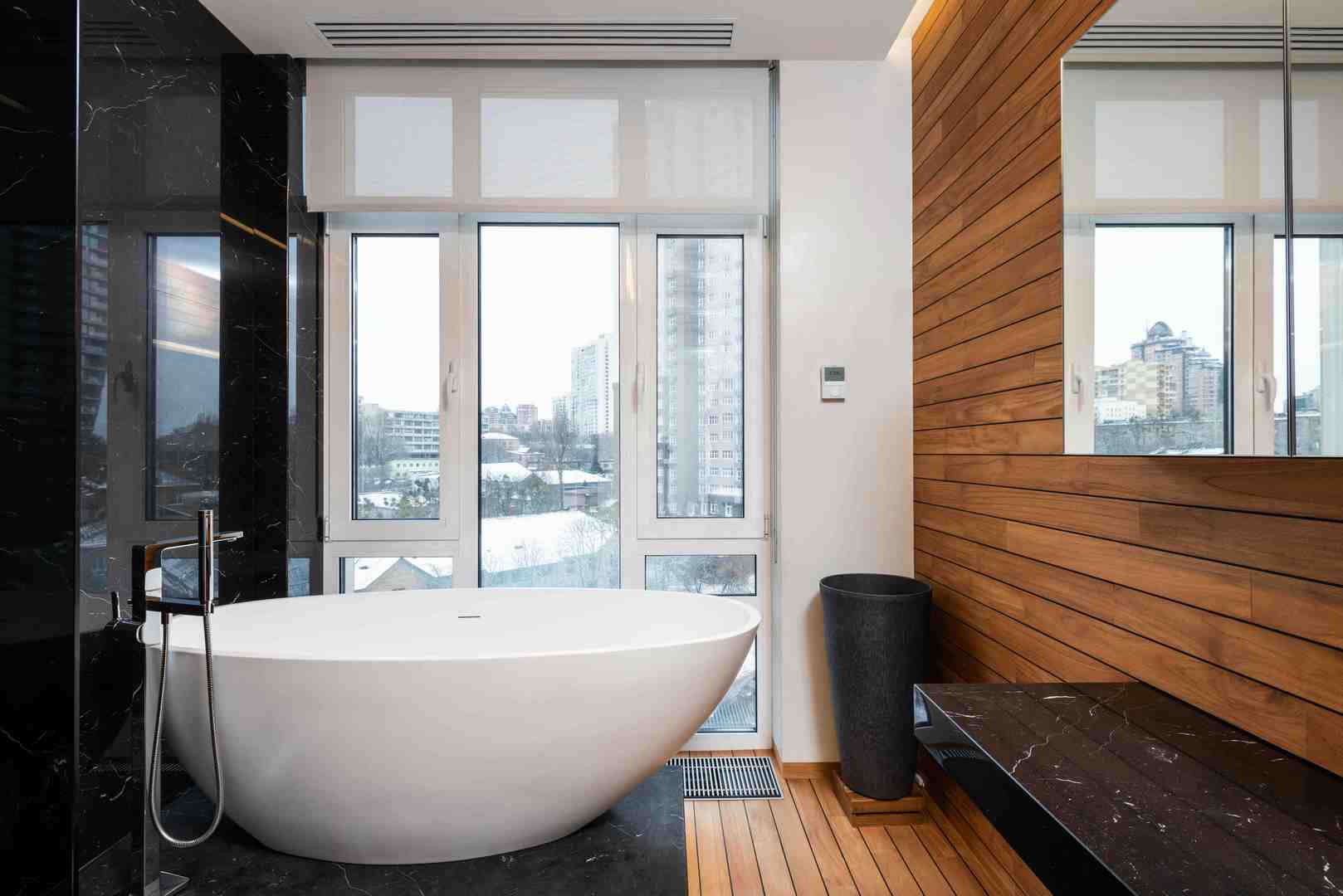
Definition & Design:
Freestanding bathtubs are stand-alone units that do not connect to surrounding walls or built-in structures. Positioned as a centerpiece, these tubs can be placed anywhere in the bathroom where plumbing access is available. They are available in a wide range of shapes—from elegant clawfoot styles to modern minimalist ovals and rectangular designs—allowing designers and developers to create unique, statement-making spaces.
Advantages:
Luxury Aesthetic: Freestanding tubs immediately elevate a bathroom, giving it a spa-like, high-end atmosphere. They are a hallmark of boutique hotels, luxury residences, and designer projects.
Flexible Placement: Unlike built-in tubs, freestanding models can be positioned in the middle of the room, near windows, or as a focal point—allowing greater freedom in bathroom layouts.
Variety of Styles: From traditional cast-iron clawfoot tubs to sleek acrylic or stone resin models, freestanding bathtubs provide diverse design options to suit both classic and modern interiors.
Challenges:
Exposed Plumbing Fittings: Freestanding tubs require floor-mounted or wall-mounted fillers, exposed drains, and overflow systems. These fittings must be carefully selected to match the tub style, as they remain visible.
Space Requirements: They need generous bathroom space for both installation and visual impact, making them less suitable for compact apartments.
Higher Installation Cost: Additional plumbing work and premium fittings typically make freestanding tubs more expensive to install compared to built-in models.
Summary:
Freestanding bathtubs deliver unmatched luxury and design flexibility but require careful planning for fittings and installation. They are best suited for upscale residential projects, hotels, and spa-inspired developments.
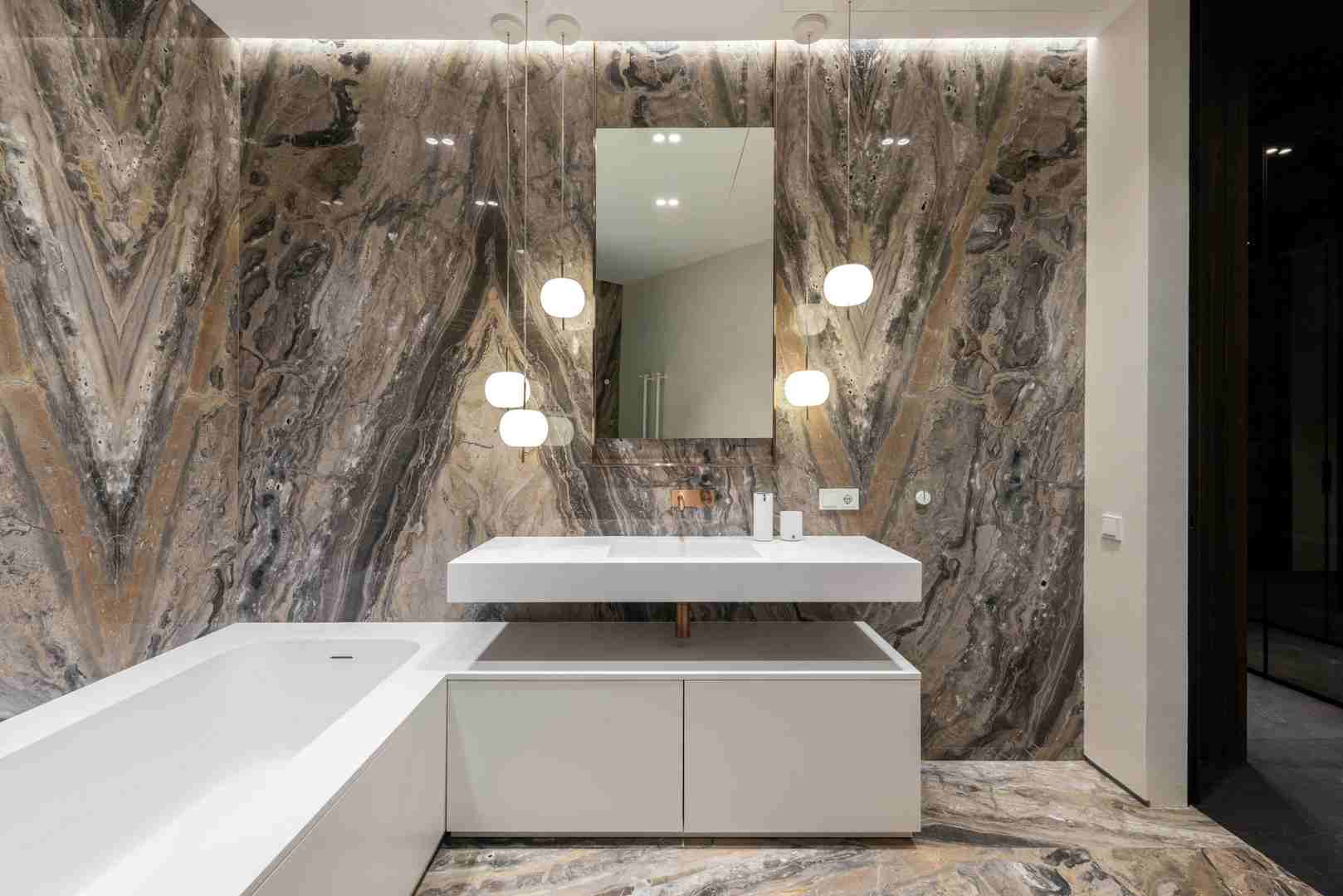
Definition & Design:
Built-in bathtubs are designed to be installed against one or more walls or recessed into alcoves. They are often surrounded by tiling or panels, creating a seamless look that integrates with the overall bathroom layout. Built-in tubs are the most common choice in apartments, residential developments, and commercial projects where space efficiency is essential.
Advantages:
Space-Saving: Because they fit snugly against walls or in corners, built-in bathtubs maximize available floor space—making them ideal for smaller bathrooms or large-scale housing projects where efficient layouts are required.
Efficient Use of Bathrooms: Many built-in bathtubs are paired with shower systems, offering a dual-purpose bathing and showering solution that suits families, apartments, and hotels.
Easier Waterproofing: Since they are enclosed within walls and panels, waterproofing and sealing are generally more straightforward, reducing the risk of leaks and water damage compared to freestanding tubs.
Challenges:
Limited Placement Flexibility: Placement is usually restricted to corners or alcoves, reducing design freedom compared to freestanding tubs.
Concealed Fittings: Built-in bathtubs require wall-mounted faucets, concealed drains, and overflow systems, which makes installation easier but can complicate maintenance if repairs are needed later.
Summary:
Built-in bathtubs are a practical, space-efficient option, particularly for apartments, family homes, and large developments. While they lack the dramatic visual impact of freestanding tubs, they offer versatility, cost savings, and functionality for everyday use.
Freestanding bathtubs make a visual statement, and their fittings play a key role in both functionality and aesthetics. Because the plumbing is exposed, every component must not only perform reliably but also complement the overall design of the tub and bathroom.
Freestanding Tub Fillers
The centerpiece of any freestanding bathtub fitting.
Can be floor-mounted (most common, placed directly beside the tub) or wall-mounted (when the tub is near a wall).
Available in single-lever, dual-handle, or thermostatic mixer designs to provide precise water control.
Finishes such as polished chrome, brushed nickel, or matte black help match the bathroom’s style.
Drain & Overflow Kits
Since plumbing is visible, drain and overflow systems must be both functional and decorative.
Designed to match the tub filler finishes (e.g., chrome, brass, matte black), ensuring a cohesive look.
Easy-to-operate systems—like click-clack or push-button drains—are preferred in luxury settings.
Shower Attachments
Many freestanding tub fillers integrate a hand shower attachment, offering extra convenience for rinsing, cleaning the tub, or quick showers.
This feature is particularly valued in hotels and upscale residences where versatility is important.
Material Choices
Brass: The preferred option for luxury projects, offering a premium look, durability, and excellent resistance to corrosion. Often used in boutique hotels and high-end residences.
Stainless Steel: Lightweight and highly durable, stainless steel fittings are ideal for large-scale projects where cost efficiency, hygiene, and corrosion resistance are priorities.
Summary:
Fittings for freestanding bathtubs need to combine style with performance. From floor-mounted fillers to matching drain kits and optional shower attachments, the right fittings enhance the tub’s luxury appeal while ensuring reliable, long-term use.
Built-in bathtubs are designed for practicality and space efficiency, and their fittings must support both everyday functionality and long-term durability. Since most plumbing is concealed within walls or enclosures, fittings for built-in tubs focus on reliability, clean aesthetics, and ease of use.
Wall-Mounted Faucets & Mixers
Installed directly into the adjacent wall above the tub.
Available in single-lever, dual-handle, or thermostatic options for precise water temperature control.
Wall-mounted designs save space and contribute to a streamlined, modern bathroom look, ideal for apartments and commercial projects.
Concealed Drain & Overflow Systems
Integrated seamlessly into the tub enclosure for a clean, minimal appearance.
Keeps functional components hidden, reducing visual clutter and making the bathroom easier to maintain.
Available in click-clack or push-button systems for added convenience.
Shower-Bath Combinations
Many built-in bathtubs double as shower areas, making mixer valves with dual-use controls a practical choice.
Options often include diverters to switch between bathtub filling and overhead/hand showers.
Particularly valuable in family homes, apartments, and hotels where space-saving functionality is essential.
Material Choices
Stainless Steel: Cost-effective, durable, and corrosion-resistant, stainless steel is the preferred material for large-scale developments such as residential complexes or commercial restrooms.
Brass: Used for upscale projects where aesthetics and long-term performance are critical, particularly in hotels and luxury residences.
Summary:
Fittings for built-in bathtubs are designed to be discreet, practical, and multifunctional. By combining wall-mounted faucets, concealed drainage, and shower-bath mixers, they deliver efficiency and comfort while blending seamlessly into the overall bathroom design.
When selecting between freestanding and built-in bathtubs, it’s essential to evaluate how each type performs over time and what level of maintenance is required. Both styles can deliver excellent durability, but their fittings and installation methods influence upkeep differently.
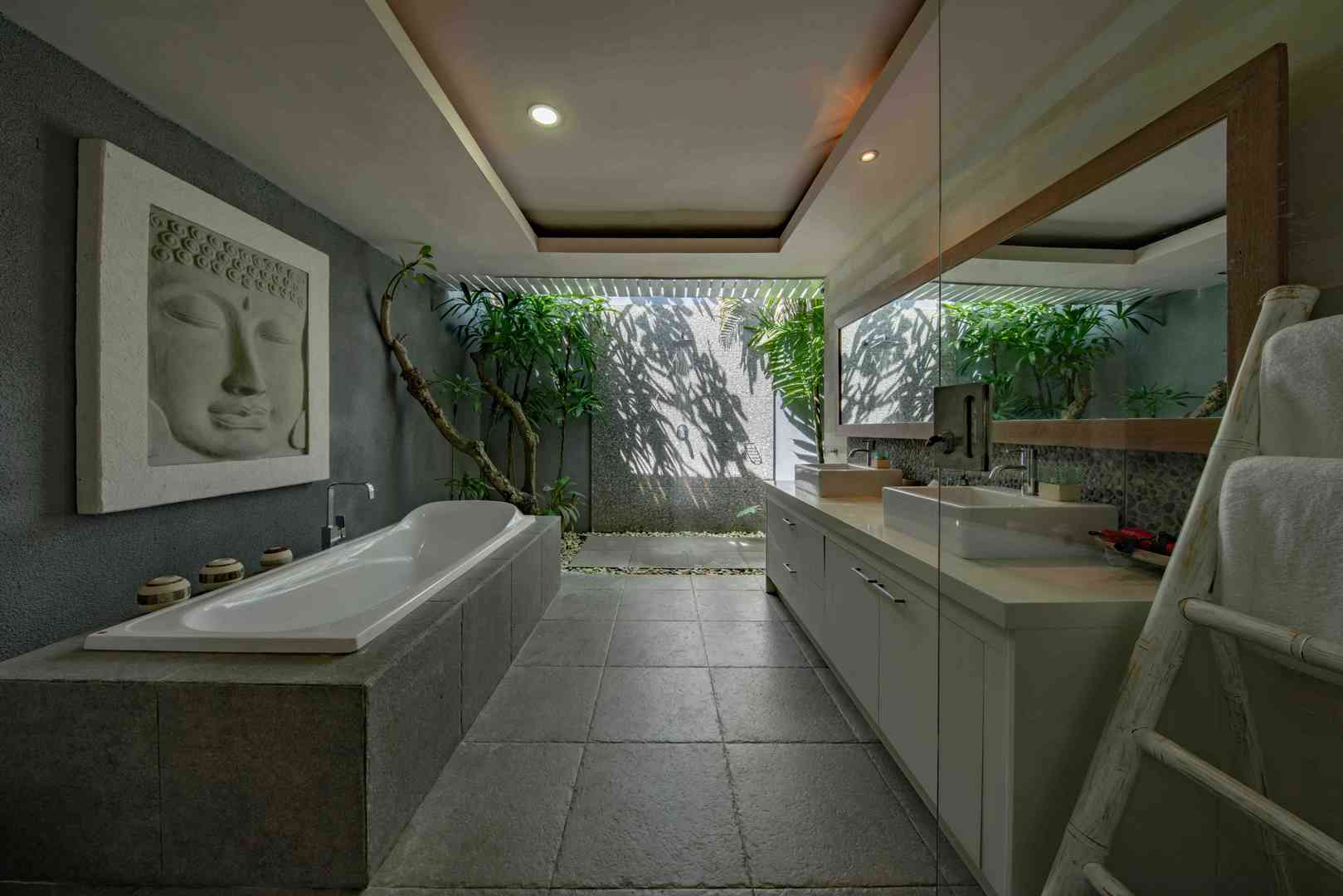
Freestanding Bathtubs
Exposed Fittings: Since fillers, drains, and overflow systems are visible, they must feature high-quality finishes that resist corrosion, tarnishing, and scratches. Premium coatings such as PVD, chrome, or matte finishes help maintain appearance over time.
Easy Cleaning Access: Exposed fittings allow for straightforward cleaning and inspections. Issues such as leaks or wear are easier to identify and address without dismantling walls or enclosures.
Long-Term Performance: The key is to invest in moisture-resistant and durable materials (e.g., brass or stainless steel) to ensure fittings withstand frequent water exposure.
Built-In Bathtubs
Concealed Fittings: Wall-mounted faucets and integrated drainage systems are hidden within the tub structure or surrounding walls. This creates a streamlined, low-maintenance look, with fewer exposed surfaces to clean daily.
Maintenance Challenges: While easier to clean, concealed systems can be harder to repair. Access panels or additional work may be required if plumbing issues occur, which could increase service costs.
Durability: With proper installation and waterproofing, built-in systems are highly reliable. Leak-proof fittings and high-quality seals are critical to prevent hidden water damage.
Shared Requirements
Regardless of type, both freestanding and built-in bathtubs require:
Moisture-Resistant Materials: Brass and stainless steel remain the most reliable options.
Leak-Proof Systems: Proper installation of drains, overflows, and seals is essential to prevent costly water damage.
Quality Assurance: Professional QC during manufacturing and correct installation on-site ensure fittings perform consistently over years of use.
Summary:
Freestanding tubs offer easier inspection and repair but demand premium finishes for visible fittings.
Built-in tubs simplify daily cleaning but can complicate long-term repairs due to concealed systems.
Both require robust, water-resistant fittings to guarantee lasting performance in residential and commercial projects.
Cost plays a decisive role in determining whether a project should feature freestanding or built-in bathtubs. Beyond the tub itself, fittings and installation requirements significantly influence overall budgets. Aligning these factors with project type, available space, and target market positioning ensures the right choice for long-term value.
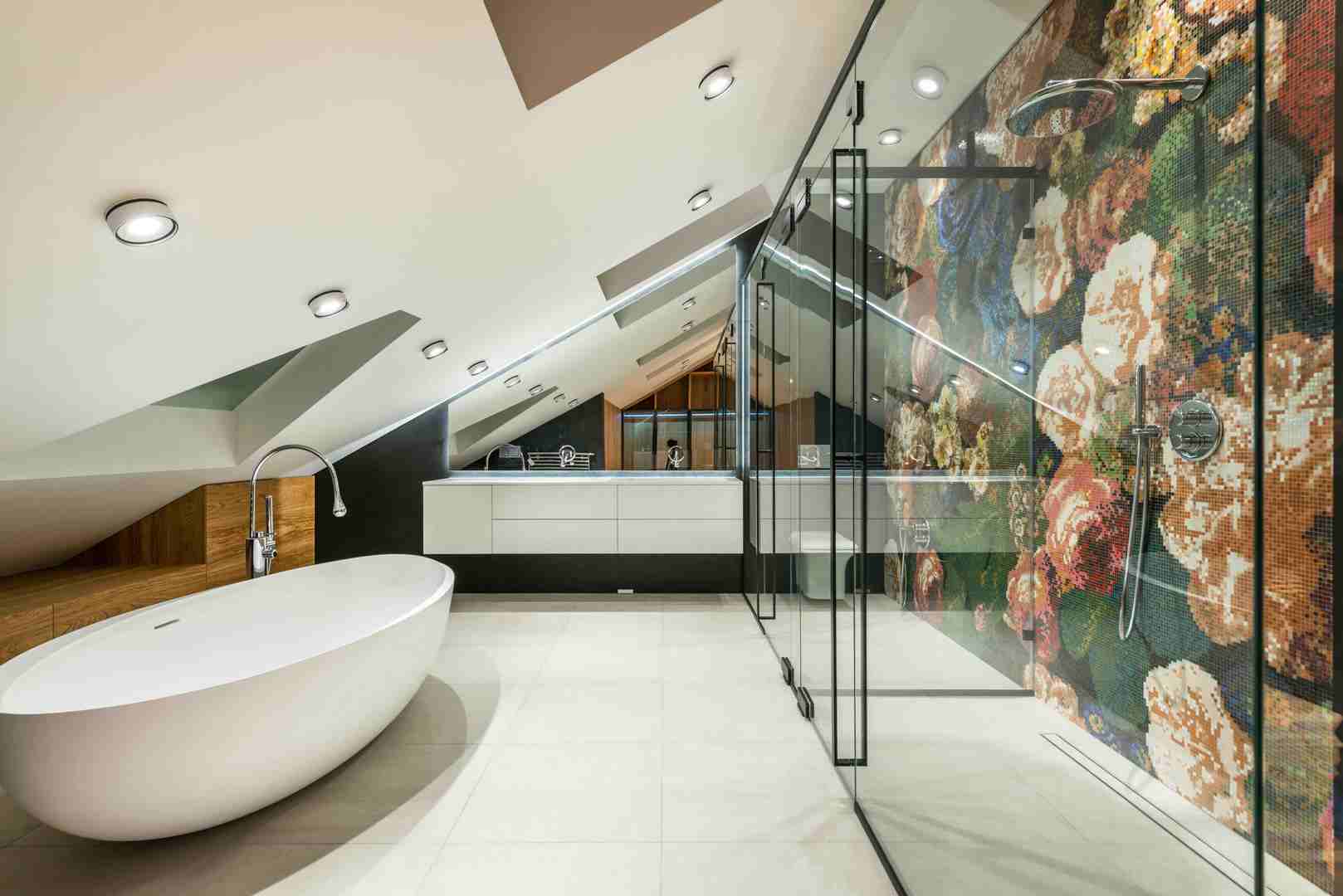
Freestanding Bathtubs
Higher Upfront Cost: Freestanding tubs require not only the bathtub itself but also specialized floor- or wall-mounted fittings. Installation is more complex, often involving additional plumbing adjustments, which raises labor costs.
Premium Market Positioning: Because of their luxurious appearance and design flexibility, freestanding bathtubs are most often used in luxury hotels, spas, boutique residences, and upscale residential projects.
Value Proposition: While costly, they enhance a property’s perceived value and appeal, offering developers and designers a competitive edge in premium markets.
Built-In Bathtubs
Budget-Friendly Choice: Built-in tubs are generally more cost-effective to purchase and install. Their wall-mounted fittings and concealed drainage systems are simpler to set up, keeping both material and labor costs lower.
Ideal for Large-Scale Projects: Built-in tubs are widely used in apartments, housing developments, hotels, and commercial projects where space efficiency and affordability matter most.
Value Proposition: Though less visually dramatic, built-in bathtubs offer reliable performance and versatility, making them the practical choice for large-volume installations.
Guidance for Buyers
Freestanding: Best for projects targeting luxury and exclusivity, where aesthetics outweigh budget constraints.
Built-In: Best for cost-sensitive or space-limited projects, where functionality, volume, and affordability are the priorities.
Summary:
Freestanding bathtubs signal luxury but require higher investment, while built-in bathtubs offer practical, scalable solutions for larger developments. The right fittings should always be matched to the project’s positioning and target market expectations.
Smart bathtub fittings are an evolution of traditional fixtures, combining digital innovation, thermostatic control, and eco-friendly technologies to create a more comfortable, safe, and sustainable bathing experience. Unlike standard faucets and mixers, these fittings are designed not only to deliver water but also to enhance user experience and reduce resource consumption.
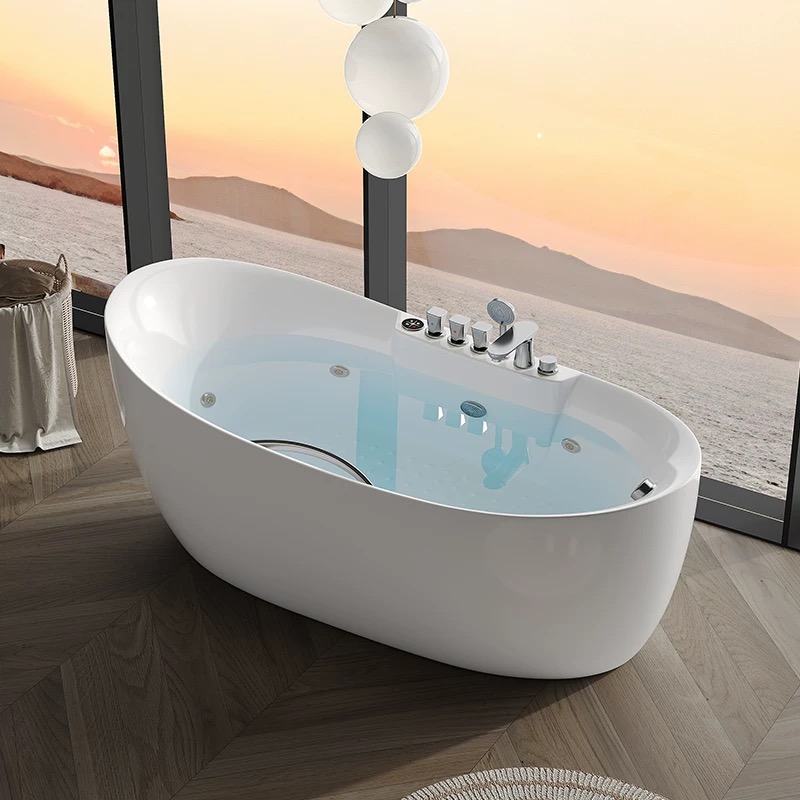
Key Examples of Smart Bathtub Fittings:
Digital Faucets: Allow users to set precise flow rates and temperatures at the touch of a button.
Thermostatic Valves: Maintain a consistent water temperature, eliminating fluctuations that can cause discomfort or safety risks.
App/Voice-Controlled Mixers: Enable guests or residents to control water temperature and filling levels through smartphones or smart home systems.
Water-Saving Aerators: Mix air with water to maintain strong flow while using significantly less water.
Why They Matter for Hotels and Residential Developers:
Hotels: Guests expect a luxury, spa-like bathroom experience. Smart fittings provide convenience, comfort, and safety, elevating guest satisfaction and reviews. They also help hotels reduce water and energy usage, lowering operational costs.
Residential Developers: In modern housing projects, buyers increasingly demand smart home features. Offering smart and sustainable bathroom fittings enhances the property’s value, supports eco-friendly positioning, and aligns with green building certifications such as LEED or BREEAM.
For hotels and modern residences, guest comfort is a top priority. Smart bathtub fittings go beyond basic functionality to deliver a personalized, safe, and luxurious bathing experience. By integrating technology with thoughtful design, they address common pain points like inconsistent water temperature, inconvenient controls, and safety risks—all while adding a touch of modern elegance.
Precise Temperature Control
Thermostatic mixers eliminate sudden hot or cold fluctuations by maintaining a constant water temperature.
Guests can simply set their preferred level and enjoy a stable flow, making the experience more relaxing and hassle-free.
This precision also helps reduce energy waste by avoiding unnecessary reheating or excess hot water use.
Luxury Experience
Digital interfaces, touch panels, and even remote controls make operating the bathtub seamless.
Guests can fill the tub at the touch of a button or pre-set the water level and temperature for a spa-like experience.
These high-tech details create a sense of indulgence, perfectly suited for five-star hotels, resorts, and upscale residences.
Versatility
Modern smart fittings often integrate hand showers, waterfall-style fillers, or multi-function mixers.
This versatility allows users to choose between a quick rinse, a therapeutic soak, or a combination of both.
In hospitality projects, offering multiple bathing options caters to a wide range of guest preferences, improving satisfaction.
Safety
Anti-scald technology ensures water doesn’t exceed safe preset levels, preventing burns.
Preset temperature settings make bathtubs safe and convenient for children, elderly guests, and individuals with limited mobility.
Safety-focused fittings build trust in high-traffic environments like hotels, where diverse guests share facilities.
Summary:
By combining comfort, safety, and ease of use, smart bathtub fittings transform the bathing experience into a memorable highlight for guests and residents alike—boosting both satisfaction and long-term property value.
Beyond guest comfort, smart bathtub fittings play a vital role in helping projects meet green building standards. Sustainability is no longer a “nice-to-have” — it is a requirement for hotels and residential developments aiming to reduce operational costs, attract eco-conscious buyers, and comply with certifications such as LEED, BREEAM, or WELL.
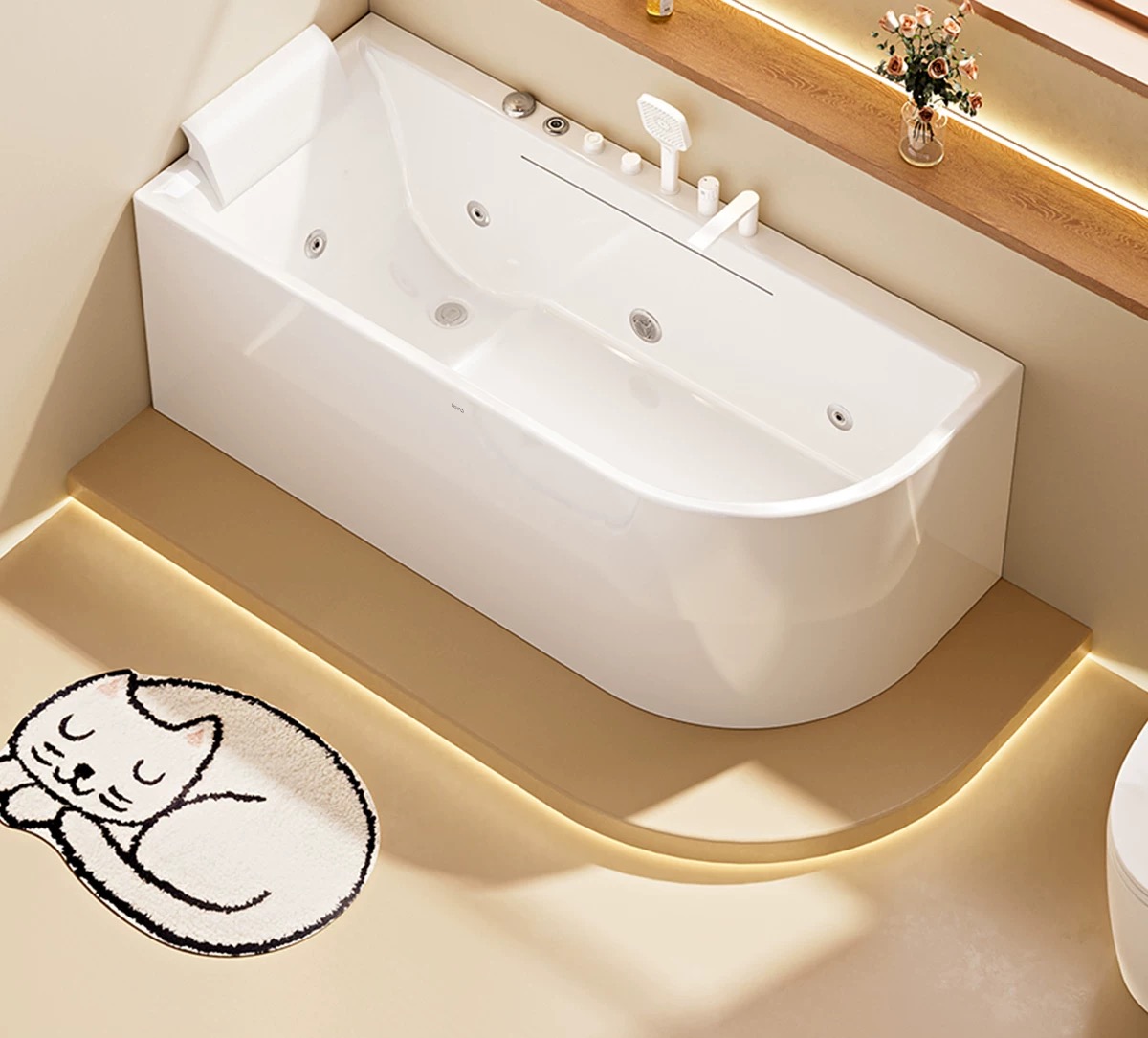
Water Conservation
Many smart fittings feature flow restrictors and aerators, which reduce water consumption by up to 30–50% while still delivering a strong, satisfying flow.
Digital controls allow for precise fill levels, preventing unnecessary water waste when filling bathtubs.
Energy Efficiency
Thermostatic mixers and digital valves optimize hot water use by reaching the desired temperature faster, reducing the energy needed to heat water.
Some advanced systems even include smart sensors that track water usage and encourage conservation without compromising user comfort.
Eco-Friendly Materials
Durable materials like brass (long lifespan) and stainless steel (fully recyclable) minimize environmental impact across the product lifecycle.
High-quality coatings extend product life, reducing the frequency of replacements and waste.
Reduced Maintenance & Waste
Smart fittings with self-cleaning aerators and durable seals require fewer replacements and repairs, lowering both maintenance costs and landfill waste.
For large-scale hotel or residential projects, these savings compound significantly over time.
Summary:
By incorporating water- and energy-saving technologies, smart bathtub fittings directly support green building goals—helping developers and hoteliers cut costs, achieve eco-certifications, and align with global sustainability standards.
Smart and sustainable bathtub fittings offer clear advantages for both hospitality operators and residential developers. They not only enhance guest or resident experience but also deliver tangible business value through savings, compliance, and brand differentiation.
Guest Satisfaction
Smart fittings create a spa-like experience, offering precise controls, digital convenience, and luxury finishes.
Features like preset temperatures, integrated showers, and touch-panel operation elevate comfort and personalization.
In hotels, this directly impacts guest reviews and repeat bookings. In residences, it boosts buyer appeal and property value.
Operational Savings
Water-saving aerators and thermostatic controls help hotels and housing projects reduce utility bills.
Lower energy consumption from optimized hot water usage directly cuts operating costs.
With durable materials and low-maintenance design, fittings also reduce replacement and repair expenses over time.
Sustainability Compliance
Supports green building certifications such as LEED, BREEAM, and WELL.
Helps developers and hotel operators meet increasingly strict local environmental regulations and global sustainability targets.
Compliance strengthens eligibility for green financing and government incentives in some regions.
Brand Reputation
Hotels adopting smart, eco-friendly fittings appeal to eco-conscious travelers, strengthening brand loyalty.
Developers position residential projects as future-ready and premium, attracting buyers seeking sustainable living spaces.
Aligns with broader corporate ESG (Environmental, Social, Governance) commitments, improving long-term brand image.
Summary:
For hotels, smart fittings mean happier guests and lower operating costs. For residential projects, they provide added property value and sustainable branding. In both cases, they represent a strategic investment in comfort and eco-efficiency.
At Sunvin, we recognize that every project—whether it’s a luxury hotel, a modern apartment complex, or a wellness spa—has unique requirements when it comes to bathtub fittings. With over 17 years of industry expertise, we provide solutions that balance style, durability, and cost-efficiency for global buyers.
Wide Range of Fittings
We supply an extensive portfolio of fittings, including freestanding tub fillers, wall-mounted mixers, drain and overflow kits, and shower attachments.
Whether your project requires exposed fittings for statement freestanding bathtubs or concealed systems for space-efficient built-in tubs, Sunvin has tailored options to match.
Customization (OEM/ODM Services)
Our team works closely with wholesalers, developers, and designers to deliver customized fittings that align with project aesthetics and technical needs.
Options include material selection (brass or stainless steel), finishes (chrome, brushed nickel, matte black, gold), and functional enhancements.
Factory Strengths
Automated Production: Our Foshan-based factory is equipped with advanced, digitalized production lines capable of handling large-volume orders with precision.
Strict QC Standards: A dedicated quality control team inspects materials, finishes, and performance to ensure every fitting meets international standards.
Sustainable Manufacturing: With intelligent wastewater treatment and a dust-free, quiet production environment, Sunvin prioritizes eco-friendly, responsible production practices.
End-to-End Support
From product sourcing and customization to logistics and documentation, our experienced sales and shipping teams ensure smooth, on-time delivery for projects worldwide.
We act as a trusted partner for wholesalers, developers, engineers, and designers, offering guidance at every stage to help you select the right bathtub fittings for your project.
With Sunvin, you gain more than just fittings—you gain a reliable partner committed to delivering quality, consistency, and design flexibility tailored to your project’s needs. Contact us now!